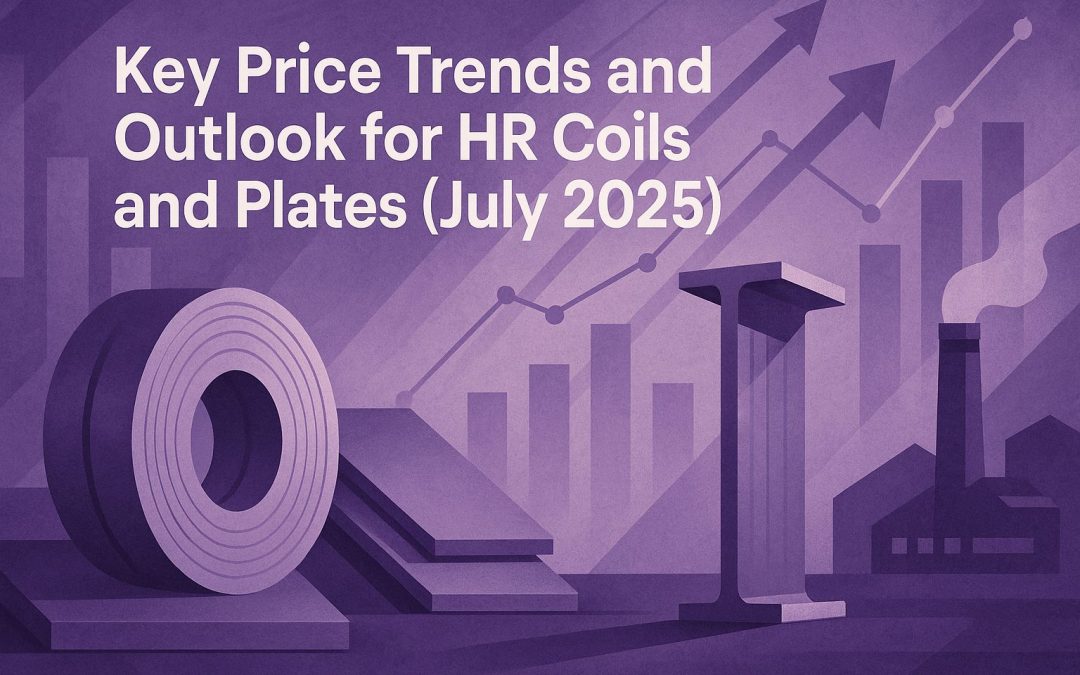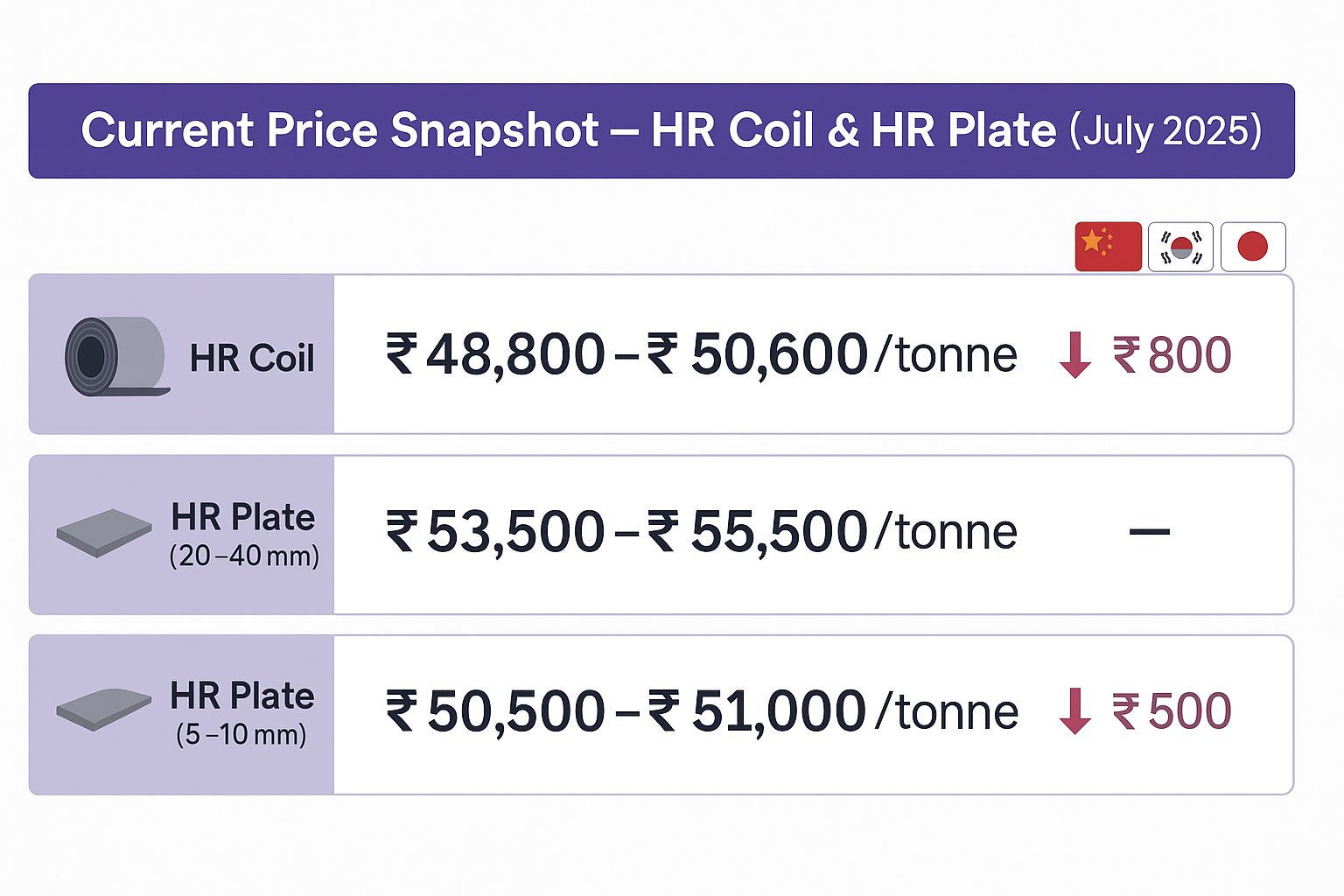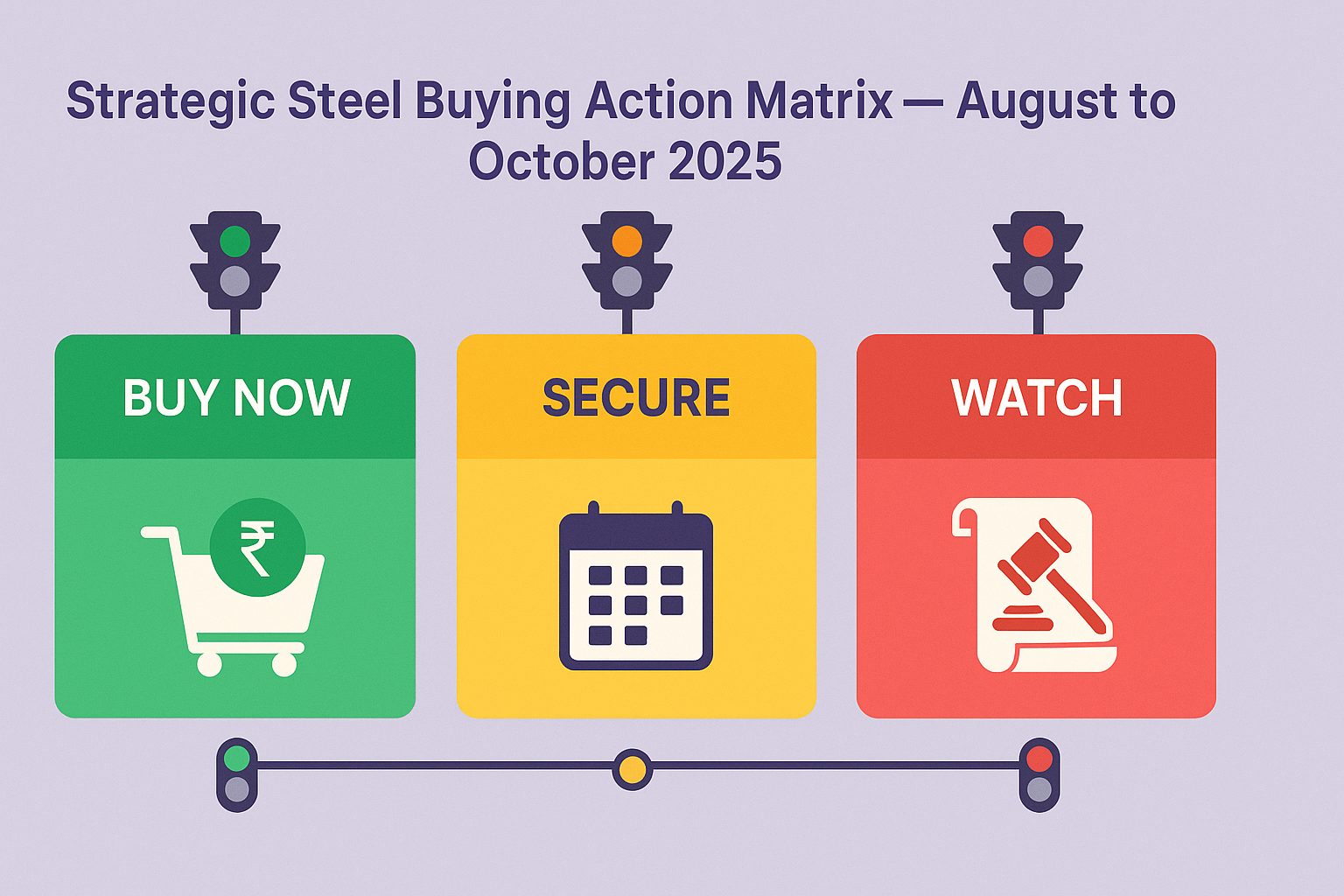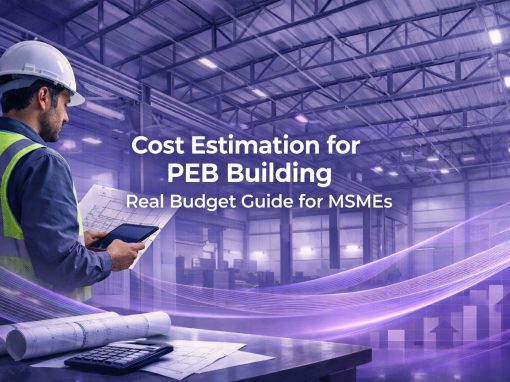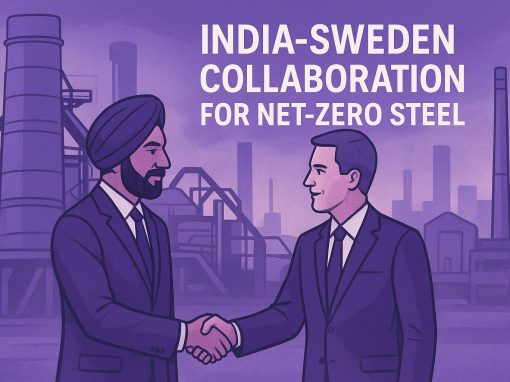Table of Contents
This detailed analysis of the Indian steel market update for July 2025, is to keep purchase managers and business owners informed about the latest trends in Hot-Rolled (HR) Coils and HR Plates across India. We will explore the factors currently shaping prices, provide a comprehensive forecast for the coming months, and offer strategic recommendations to help you make informed business decisions.
Current Market Status: Price Trends and Key Drivers
In this steel market update, the industry is currently navigating a period of seasonal weakness and increased competition.
- HR Coil Prices: Prices for HR Coils are currently in the range of ₹48,800–₹50,600 per tonne. This marks a decrease of ₹800 per tonne from the previous week. This downward trend is a direct result of weak seasonal demand and a significant increase in imports.
- HR Plate Prices: The market for HR Plates is relatively stable, with prices for Ex-Mumbai, 20–40mm, IS2062 plates holding at ₹53,500–₹55,500 per tonne. However, a notable exception is thinner HSM plates (5–10mm), which have seen a dip of around ₹500 per tonne, now priced at ₹50,500–₹51,000 per tonne.
The primary factors behind these trends are the monsoon-driven slowdown in construction and infrastructure activities and a surge in steel imports from countries like China, South Korea, and Japan. High inventories at ports are also putting additional pressure on domestic prices, despite mills maintaining steady production.
1-Month Outlook: The August 2025 Forecast
Looking ahead to August, we anticipate that HR Coil and Plate prices will either remain range-bound or see a slight decrease. Several key drivers support this forecast:
- Weak Seasonal Demand: The monsoon season is expected to continue impacting end-user demand.
- Record High Imports: The high volume of steel imports will continue to create a competitive market environment.
- High Port Inventories: Large inventories at ports will persist, preventing any immediate price increases.
- Steady Mill Production: Domestic mills are likely to hold steady on production levels, waiting for the demand to pick up.
A key takeaway for August is the potential for further discounts on spot deals due to the heightened competition from imports.
2-3 Month Outlook: The September–October 2025 Recovery
The outlook for the period of September–October is more positive, with a mild recovery or stabilization of prices being a possibility. This is largely dependent on the anticipated post-monsoon pickup in economic activity.
- Infrastructure and Real Estate Push: The government’s continued focus on infrastructure projects and a potential rebound in the real estate sector are expected to drive steel demand.
- Potential Safeguard Duties: A significant policy decision is expected by August regarding a potential 25% safeguard duty on steel imports. If implemented, this could be a major turning point, potentially triggering a price jump of over ₹1,000 per tonne.
- Global Overcapacity: While the domestic market shows signs of recovery, global overcapacity, particularly from China, remains a risk.
- Overall Demand Growth: Steel demand in India is still forecasted to grow by 8–9% year-on-year in 2025.
Strategic Recommendations
- Near-term (August): Given the current low prices, now is an excellent time to consider making spot purchases to meet your immediate needs.
- Medium-term (Q3): It is advisable to secure your Q3 requirements before the anticipated post-monsoon price recovery begins.
- Policy Watch: Pay close attention to the government’s decision on import duties, as this could be a “game-changer” for price direction by mid-August.
Conclusion
The Indian steel market update is that, it is currently experiencing a period of low prices driven by seasonal demand weakness and high imports. While the immediate future remains soft, the outlook for September and October is more promising. The potential for a post-monsoon demand surge, coupled with a crucial government decision on import duties, could lead to a significant price recovery. By staying informed and strategically timing your purchases, you can effectively manage costs and capitalize on market movements.
Looking to procure steel?
Tata nexarc helps manufacturers, builders and MSMEs source certified steel products, compare prices, and choose the right grade as per IS codes—with complete traceability and procurement confidence.
FAQs
Should MSMEs buy HR Coils and Plates now or wait?
If you have short-term requirements, this is a good time to buy. Prices are low due to weak demand and high imports. For Q3 needs, it's wise to secure contracts before the expected price rebound in September–October.
How will the monsoon affect steel demand and prices?
Monsoon months usually see reduced construction and infrastructure activity, which lowers demand for steel. As a result, prices tend to dip, offering a buying opportunity. Post-monsoon, demand typically recovers, pushing prices up.
What is the proposed 25% safeguard duty on steel imports?
The Indian government is considering a safeguard duty of 25% to curb rising imports. If imposed, it could raise domestic steel prices by ₹1,000–₹1,500/tonne. This policy decision is expected by mid-August 2025.
Why are steel imports from China and Korea impacting Indian prices?
These countries are exporting excess steel at competitive prices. The surge in imports is increasing supply in India, creating downward pressure on domestic prices and intensifying competition for local mills.
How can MSMEs manage price volatility when buying steel?
Split your procurement—buy spot for immediate needs and consider short-term contracts for Q3. Stay informed about price trends and keep track of inventory levels to avoid last-minute purchases at peak rates.
Are thinner HR plates cheaper than standard ones right now?
What sectors benefit most from current low steel prices?
MSMEs in fabrication, automotive components, engineering goods, and real estate stand to benefit the most. Lower input costs can improve margins or make expansion more affordable.
Should MSMEs stock up on steel during a price dip?
If cash flow allows and storage is not a constraint, stocking up can be a smart move. With price recovery likely in September–October, early buying may help lower your average input cost for the quarter.
A product manager with a writer's heart, Anirban leverages his 6 years of experience to empower MSMEs in the business and technology sectors. His time at Tata nexarc honed his skills in crafting informative content tailored to MSME needs. Whether wielding words for business or developing innovative products for both Tata Nexarc and MSMEs, his passion for clear communication and a deep understanding of their challenges shine through.
